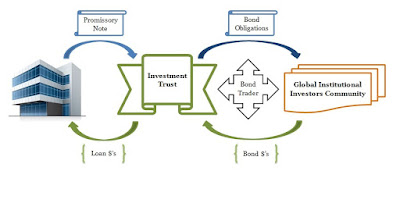General Atlantic, a New York private equity firm, acquired the business in 2015 from another private equity firm, Weston Presidio.
Too Faced was co-founded in 1998 by Southern California entrepreneurs Jarod Blandino and Jeremy Johnson.
The founders sold Too Faced to Weston Presidio in 2012, for only $71 million.
How did Too Faced Cosmetics' value go from $71 million to $1.45 billion during the 2012 to 2016 period?
There may be several explanations, but the key answer is in the way how private equity owned businesses are owned, managed, perform, and grow in value.
It is commonly known that businesses owned by private equity firms do better, at least for short- and intermediate-term, than their industry peers.
Private equity imposes certain disciplines and models to force companies to succeed or at least satisfy its highly driven and monetary-oriented ownership. Companies are forced to immediately improve financial efficiency, performance, and continuity. Well-placed partners of private equity firms serve as company ambassadors, acting as connectors to valuable contacts and strategic opportunities.
A study by A.T. Kearney (leading global consultancy) revealed the following:
- Private equity owned companies generally outperform their industry peers, primarily in slow-growth industries, such as chemicals, large consumer goods and retail, manufacturing and business services.
- Contrary to popular belief, PE firms that take on a supervisory role—giving the deal partner responsibility from acquisition through exit— deliver more value by balancing growth and profitability.
- Success factors of PE firm models are transferable for those willing to learn.
Why private equity firms love cash?
PE players look at their balance sheet not as static indicators of performance, but a dynamic tools for growth. One critical component of this approach is to aggressively manage down working capital.
Lessons from private equity any company can learn
Bain & Company, a consulting giant which has succeeded as a private equity investor as well, offers a list of lessons any company can learns from private equity:
- Define the full potential. The target is to increase equity value - how to turn $1 of equity value today into $3, $4, or $5 tomorrow.
- Develop the blueprint. The blueprint is the road map for reaching your full potential - the who, what, when, and how.
- Accelerate performance. This involves molding the organization to the blueprint, matching talent to key initiatives, and getting people to own them.
- Harness the talent. This requires creating the right incentives to recruit, retain, and motivate your best talent - and get them to think and act like owners.
- Make equity sweat. This calls for managing working capital aggressively, disciplining capital expenditures, and working the balance sheet hard.
- Foster result-oriented mind-set. The goal is inculcate disciplines so that they become part of the company's culture and create a repeatable formula for achieving results.
___________
"We love to discover companies with hidden gems like owned real estate which we can later sell and lease back, extracting our equity and reducing our base investment costs. It happens often and sellers could easily take advantage of these if they only reviewed their assets before selling to us." - Mid-size private equity executive.
"We love to discover companies with hidden gems like owned real estate which we can later sell and lease back, extracting our equity and reducing our base investment costs. It happens often and sellers could easily take advantage of these if they only reviewed their assets before selling to us." - Mid-size private equity executive.
In conclusion
Studies show that the PE business model drives value well beyond wealth creation for the owners. PE firms rejuvenate companies, create jobs, and open new markets that benefit customers, employees, suppliers and the communities in which they operate.
_____________________________________________
Clicking the Like button on various social media platforms, such as LinkedIn, Facebook, etc. does not constitute a testimonial for or endorsement of Redmount Capital Partners LLC or any Investment Advisor Representative. “Like” is not meant in the traditional sense. Posts must refrain from recommending investment advisory services or providing testimonials for our firm, since they are strictly prohibited. Please understand that we are required to delete such posts, since this is a regulatory requirement.
















